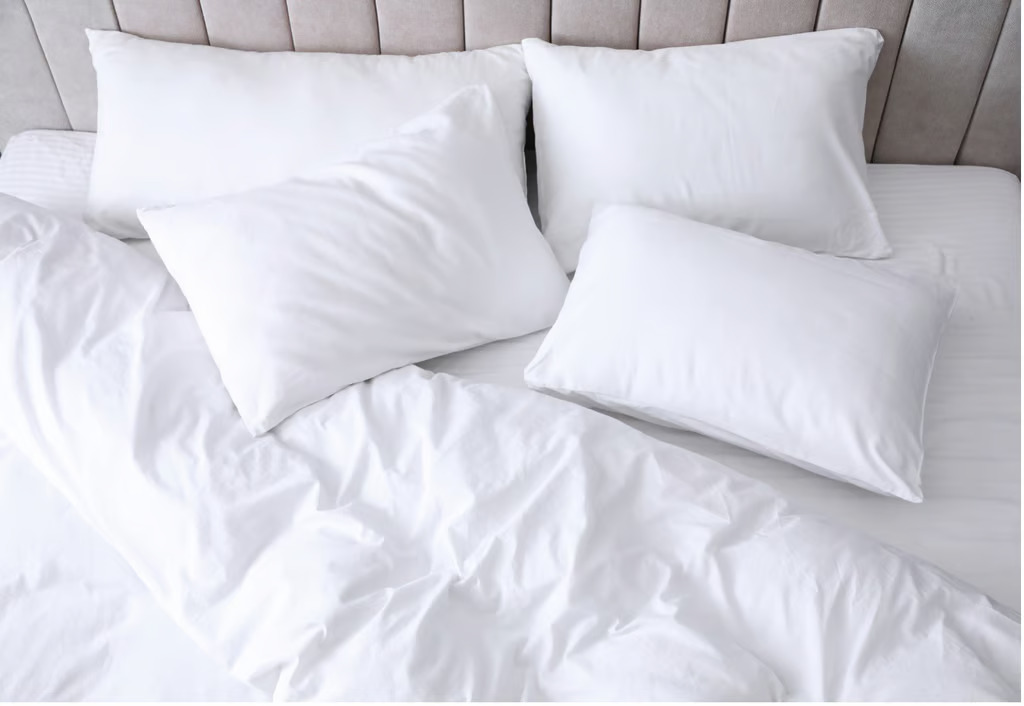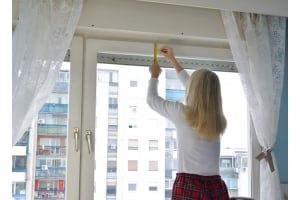How Often Should Duvets Be Replaced?

How long should you keep a duvet for?
The Sleep Council recently revealed that chimpanzees sleep in cleaner beds than humans. So, it's no wonder we often keep comfort far beyond the sold-out date. Hidden under the beautiful sheets, blankets and bedspreads are rugged, flimsy and totally dirty comfort, however, your bedroom is not just for sleep, but also for our overall health.
So how do you know when it is time to replace your duvet?
Whatever shape or size your duvet is, one of the first signs it needs to be replaced is when it begins to feel thin and uneven. If most of the feathers in each compartment of the duvet have clumped or disappeared, these compartments will have no insulation so need to be replaced in order to give you a comfortable, warm night sleep. One that can help extend the life of your duvet is once or twice a year, rotate the duvet 180 degrees and turn it over to even the use of your duvet.
How warm is the duvet?
Duvet warmth depends on the togs. The higher your duvet’s tog, the warmer it will be. The highest common tog duvet available is 13.5 and the lowest common tog is 4.5. Lighter duvets are more suitable for summer to prevent you getting too hot, and the heavier, thicker duvets are better in winter when they can keep you warm. Maintaining the right temperature all night is one of the most important factors in ensuring a good night's sleep. If your duvet is old or worn and has cold spots, you are more likely to wake up early in the morning when the temperature drops.
Why is the duvet clumpy?
One of the signs a duvet needs to be replaced is when the contents are lumpy. As the duvet ages, its padding can clump together and appear to harden. This can occur in both synthetic and natural fillings. To prevent this, shake the duvet after washing. Another cause is when the duvet padding is leaking. High quality duvets usually come with a high threaded cover and will last a long time. However, poor quality duvets have a small number of threads and may have insufficient stitching. This means that the contents may leak after a while resulting in a clumpy, uneven duvet. When either of these things happen, it is often time to buy a new duvet.
How often do you need to wash your duvet?
Bedding should be washed regularly for good hygiene. Most bedding retailers recommend washing your actual duvet every few months or at least twice a year. Duvets can be machine washed in a regular washing machine and can also be dry cleaned. However, if your washing machine isn't big enough, you'll need to do this at a dry cleaner. Each year, we lose about 1 pound (454 g) of skin cells in bed, and every night we lose about 1 pint of water during sleep. Much of ithis is transferred to the duvet meaning after a while, it becomes difficult to clean and the duvets don’t look fresh. At this stage, it's certainly time to replace your duvet.
If you don't wash your duvet regularly, it can be a problem. Dust mites feed on human-flushed skin cells and breed in warm, moist environments such as beds. They can cause symptoms like hay fever such as sneezing and runny nose. Many people with dust mite allergies also experience asthma symptoms such as dyspnoea and wheezing. If you notice any of these signs, it may help to replace the comforter (and other bedding) with a hypoallergenic item.
Pillows on the other hand, are recommended to be washed more often than duvets, about four times a year. Fortunately, most pillows filled with synthetic fibres can be machine washed at about 40°C or 60°C. However, some pillows require professional cleaning, so you should always check the care label.
How long can I keep my duvet?
The Sleep Council suggests replacing the duvet every two to five years, but it is possible to extend the life of the duvet with the tips mentioned above like cleaning. Extending the life of your duvet covers also extends the life of your duvet, plus, covers are easier to clean, wash and can protect your duvet from dirt and mites. Many are also waterproof, breathable, and hypoallergenic.
We spend an average of 8 hours on bedding every night. This means spending almost 3000 hours sleeping or in bed in just one year. Of course, this means that your bedding can be the most used object in your bedroom, even if it's not in your home. Bedding lasts a long time, but it doesn't last forever. For this reason, it is important to keep on top of your duvet and bedding hygiene.
5 Warning signs you need a new duvet
Most of us wash and clean the linen on a regular basis, but that doesn't mean that everything will last forever. Here are five signs that it's time to change your linen.
- Persistent odour: Is there an odour that won't go away no matter how many times you wash it? The smell means it's time to throw away the set and get new bedding.
- Yellowing or fading: The colours and patterns of old bedding will eventually fade. Mattress pads, pillows and mattresses turn yellow when ready to be replaced. Remember that your sweat is what caused that yellowish tint. If you notice this, it indicates that the linen needs to be changed.
- Filling is leaking: The contents ensure that you feel supported all night while you sleep. If you notice that your duvet, pillow, or mattress is missing, it's time to upgrade.
- You can't sleep very well anymore: This sign is big! The first time you find yourself uncomfortable or unsupported, you need to upgrade your bedding.
- Obvious damage: If holes, pills, seams or crevices are unravelled, discard the linen as soon as possible. Not worth hanging on sheets, pillows, mattresses and duvets with obvious signs of wear.
- Life expectancy of bedding: Sheets, quilts, comforters and other blankets depend on the product you purchased and their materials. Not all items have the same lifespan, so it is important to know the life expectancy. The average mattress lasts about 6-8 years. Pillows deteriorate after a year or two.






